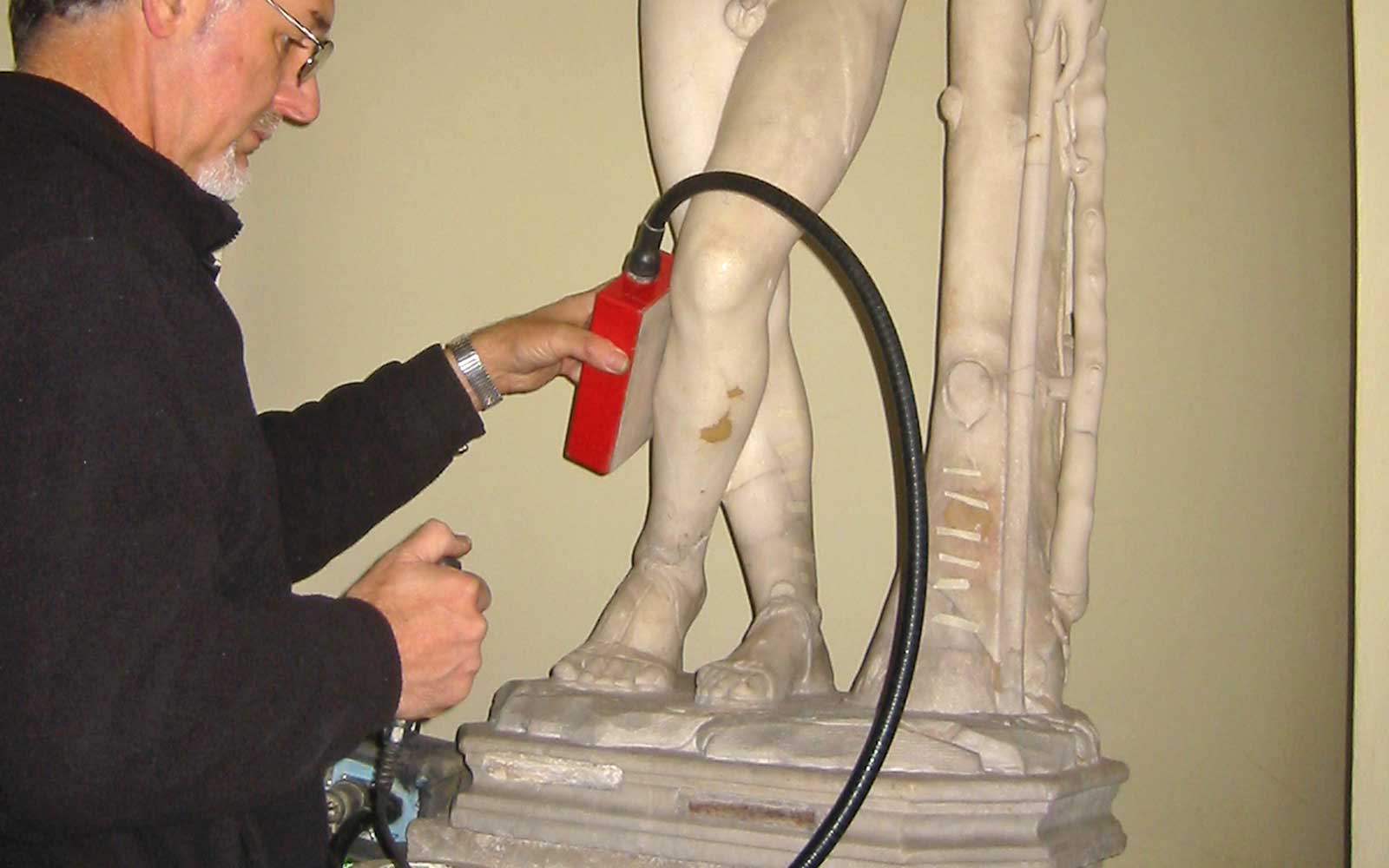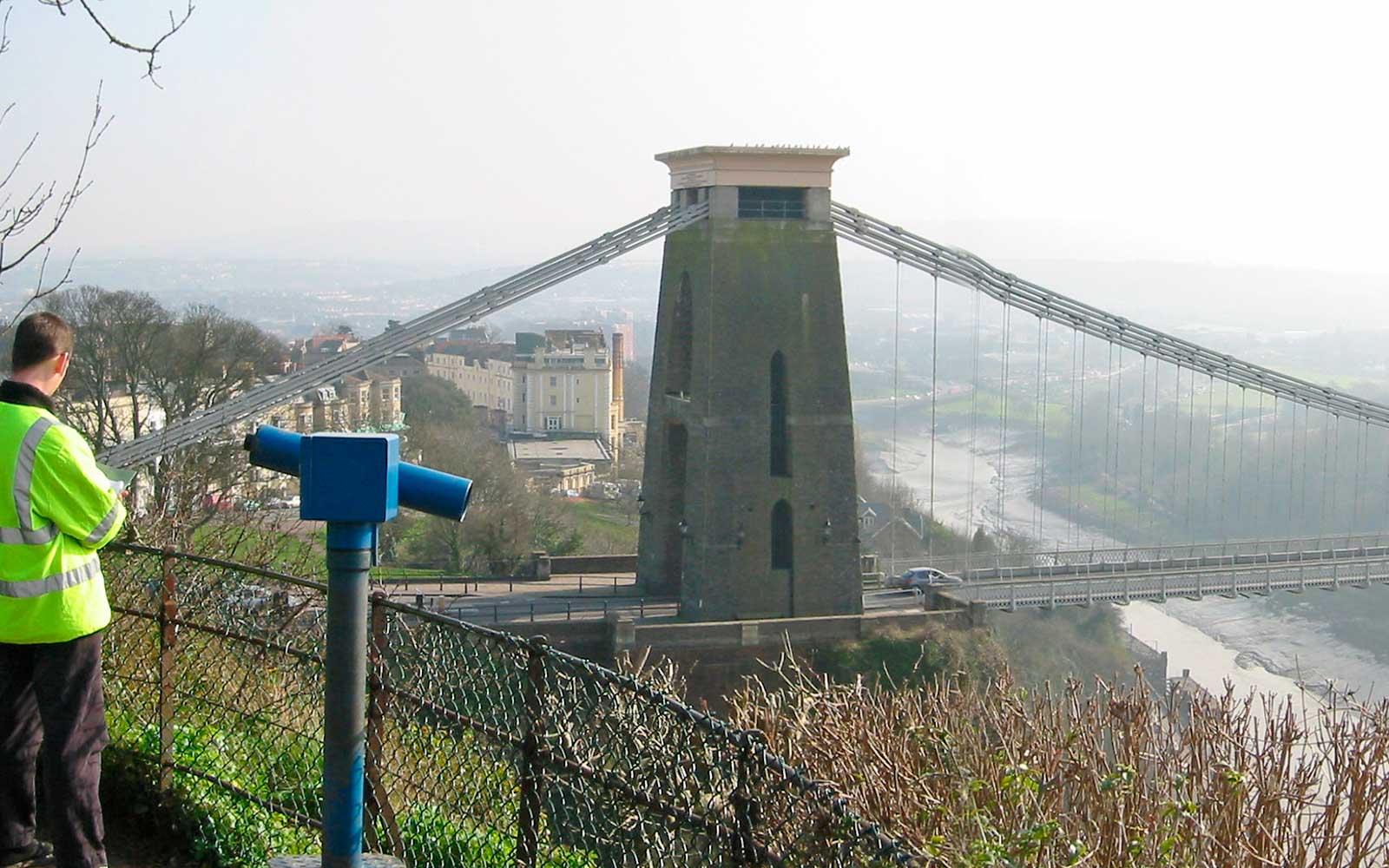Thermography or Infrared
Offering an ideal method of structural reconnaissance - identifying areas of difference in construction or condition, before more detailed inspection by other methods. Call for more information.
Infra-Red and Visible Light Imaging
Thermography or Infra-Red and Visible Light Imaging, apart from obvious value in measuring heat losses from buildings, offers an ideal method of structural reconnaissance - identifying areas of difference in construction or condition, before more detailed inspection by other methods.
Operating in the long wave to far infra-red region, measurements are made of the low temperature thermal radiation of an object, and thus its response to environmental changes.
Every day, heat flows into and out of any mass of masonry or concrete: if it is sound and uniform, the flow is effectively a constant, with some local differences dependent on bedding and thickness. Local inclusions such as metal anchors or voids, together with mechanical deterioration, the development of spalls and delamination, will interrupt the flow, altering the thermal response of the element to environmental change. Water absorption, and subsequent evaporative cooling decreases the surface temperature of any dampened unit - often indicative of damage or failure -, at a rate proportional to its porosity, and thus to the extent of damage.
Alternatively, the process also allows an estimate to be made of the general variations in moisture content of an element, and allows an easy means of tracking water penetration into a building.
This can be calibrated against the other methods, such as radar and acoustic soundings, to provide a complete mapping of moisture from the point of entry through the solid to the point of egress on the other side of the external barrier. It can thus offer a rapid reconnaissance technique to identify remotely any defective parts of the envelope, which may allow moisture and atmospheric pollutants to penetrate the structure and accelerate corrosion and deterioration.
Information capture is by continuous video coupled with high resolution still images coupled with digital video images, thus an easily traceable audit trail of condition can be rapidly built.
The main disadvantage of the technique is that care has to be taken over timing of the investigation, to maximise the thermal differentials, whilst avoiding swamping the signals of interest with solar heat gain.
GBG investigates a wide range of structures from historically significant buildings to small private residences.
Complete the form below, call us on +44 1223 812 464 or contact us via email at works@gbg.co.uk. A member of the team will respond ASAP to discuss your requirements.
Please note: GBG Group is compliant with the General Data Protection Regulation (GDPR). To learn more about how we collect, keep, and process your private information in compliance with GDPR, please view our privacy policy. *






